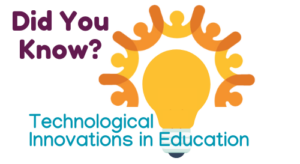Screens, Swipes, and Society: The Future of Digital Citizenship in an Ever-Changing Tech Landscape


 In a world where toddlers seamlessly transition from building with blocks to swiping on screens, the intertwining of early childhood and technology becomes inevitable.
In a world where toddlers seamlessly transition from building with blocks to swiping on screens, the intertwining of early childhood and technology becomes inevitable.
The digital realm is not a mere adjunct to our world, but rather is an integral part of the ecosystem in which our children are growing up. Beyond the buzzes, beeps, and pixels lies an intricate landscape of norms, rights, and responsibilities, just as complex and crucial as those in the physical world.
As our children set out on their digitally enhanced life voyage, guiding them through the essence of digital citizenship becomes paramount. This guidance goes beyond ensuring they know which button to press; they need grounding in the values and discernment required to use technology responsibly and ethically in an ever-evolving landscape.
There are many different definitions/components of digital citizenship. The table linked here is a collection of definitions taken from various sources. As educators, we can review this list as we consider ways to build digital citizenship lessons into our teaching.
Digital literacy is the skill set that allows an individual to effectively use and navigate digital tools. For example, a child adept at playing an educational game on a tablet showcases this competency.
Digital citizenship, on the other hand, concerns using these tools responsibly and ethically. A digitally responsible child understands the importance of taking breaks, refrains from oversharing personal details, and interacts kindly with online peers.
Digital literacy lays the foundation for genuine digital citizenship, much like how reading proficiency is essential for in-depth comprehension and discussion of a story.
Promoting digital citizenship requires an understanding that not all individuals possess equal access to digital tools. The term “digital divide” is used to refer to this disparity, highlighting the chasm between those with and those without technological access. Many argue that it is crucially important to bridge this gap and ensure inclusivity in our digital era.
While the rapid pace of technological advancements may make equal access challenging, it’s essential to recognize its real-world implications. For example, consider ChatGPT. Some may not have access to it at all, while others might be able to engage with its free version. A more privileged group could have access to the premium edition, and a very select few might possess access to advanced, possibly unrestricted versions of ChatGPT that aren’t accessible to the wider public, perhaps for safety considerations.
As advocates for children, it’s crucial to acknowledge that the gaps between these varied levels of access might be expanding, which can further exacerbate digital inequalities for the younger generation.
From an early age, children are exposed to technology. Devices like iPads and smartphones have become common playthings, even for toddlers, leading to both opportunities for learning and potential risks.
Young children may comprehend the broad dangers of sharing personal details, but the subtler aspects of their digital interactions often go unnoticed. Each comment, like, or subscription leaves a trace, forming their digital identity. While explaining this to young minds can be challenging, interactive games and simulations that mimic the concept of leaving clues could offer an engaging way to convey this abstract idea.
Teaching respectful in-person communication is a staple of most early education. Yet, the digital realm introduces additional complexities. Written words lack tone and can be misconstrued, influenced by the reader’s emotions at the time. For instance, an innocent comment highlighting a preference for a particular character could inadvertently exclude or hurt others.
While associations like the American Academy of Pediatrics offer screen-time guidelines, the diverse realities of young children’s digital access and experience leads to diverse realities regarding screen time. Some children exceed recommended limits, while others barely meet them or lack access to technology altogether. Achieving the essential balanced approach is seemingly getting more and more difficult and requires setting clear boundaries, providing alternative activities, and modeling responsible digital behavior.
Some digital platforms, such as YouTube, offer content creators the option to label their videos as child-friendly. However, these mechanisms aren’t foolproof. In the vast ocean of online content, children easily may stumble upon material that, while labeled for kids, might not align with a parent’s criteria for appropriateness.
Moreover, the prominence of certain behaviors on platforms can distort children’s perception of normalcy. For example, a constant barrage of toy unboxing videos might lead a child to believe that every peer has an endless supply of new toys, leading to feelings of exclusion or inadequacy. The spotlight on popular digital personalities, representing a very small percentage of the population, can skew our understanding of the broader world, affecting both young and adult minds.
The International Society for Technology in Education (ISTE) plays a pivotal role in shaping the future of digital education.
| The 2007 MIT publication Digital Citizenship: The Internet, Society, and Participation explores civic engagement and social capital in a digital age, resonating well with the ISTE’s Digital Citizenship Standards. While the MIT book presents a scholarly foundation that dissects the societal roles and participatory responsibilities tied to internet use, ISTE provides a practical framework for implementing these concepts in educational settings. In essence, the book lays the theoretical groundwork for understanding the challenges and opportunities of digital participation, which the ISTE standards then translate into actionable guidelines for educators and students. Together, they provide a comprehensive overview of how to be an effective and responsible digital citizen in an interconnected world. |
The ISTE Standards have been meticulously designed to address the needs of various stakeholders in the education sector. For students, the emphasis is on equipping them with vital skills to flourish in a digital era. When it comes to educators, the standards are tailored to guide them on effectively integrating technology into teaching. For education leaders, the standards provide a roadmap for cultivating a technology-enriched learning environment. Additionally, coaches receive specific guidance on assisting their peers, ensuring a smooth transition to tech-integrated educational methodologies.
As we stand at the crossroads of traditional upbringing and a technological frontier, our responsibility intensifies. We are no longer facing mere coexistence with technology; we must find a way to seamlessly integrate it into our lives with wisdom, discernment, and a deep sense of ethics.
This is especially true for our children, who will live in a world that is rapidly evolving, a realm whose contours and challenges might be beyond our current imagination. By emphasizing digital citizenship, we not only equip them with the technical skills to operate within the digital realm but also with the values to do so compassionately and responsibly.
References
Australian Government eSafety Commissioner. (n.d.). Digital citizenship guide. https://www.esafety.gov.au/media/digital-citizens-guide
Barrett, M. (2021). Preparing our youth for an inclusive and sustainable world: The OECD PISA Global Competence Framework. Assessments and findings. OECD.
Ferrari, A. (2013). DIGCOMP: A framework for developing and understanding digital competence in Europe. Institute for Prospective Technological Studies.
International Society for Technology in Education. (n.d.). ISTE standards for students. Author.
Mossberger, K., Tolbert, C. J., & McNeal, R. S. (2007). Digital citizenship: The internet, society, and participation. The MIT Press.
Ribble, M. (2015). Digital citizenship in schools (3rd ed.). International Society for Technology in Education.
Sharma, S., Kar, A. K., Gupta, M. P., Dwivedi, Y. K., & Janssen, M. (2022). Digital citizen empowerment: A systematic literature review of theories and development models. Information Technology for Development, 28(4), 660-687.
Tomasello, F. (2022). From industrial to digital citizenship: Rethinking social rights in cyberspace. Theory and Society, 52(5-6), 463-486.
UNESCO. (2015). Global citizenship education: Topics and learning objectives. Author.
von Gillern, S., Gleason, B., & Hutchison, A. (2022). Digital citizenship, media literacy, and the ACTS Framework. The Reading Teacher, 76(2), 145-158.